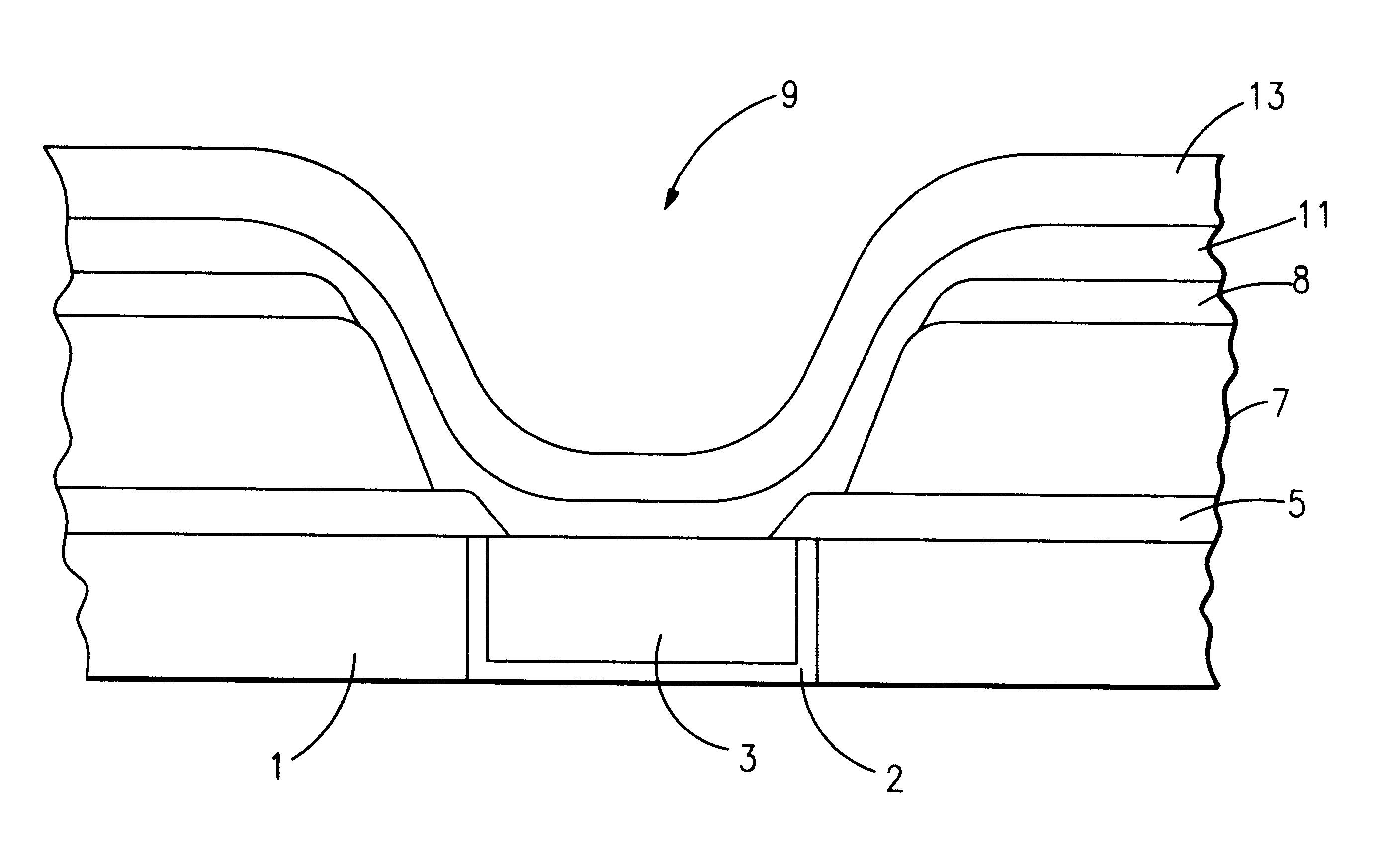Method to plate C4 to copper stud
a technology of copper studs and plate c4, which is applied in the direction of transportation and packaging, chemical coating, liquid/solution decomposition, etc., can solve the problems of insulator adjacent severe eroded, more problemsome insulator gap filling and planarization, and dishing on the larger features, etc., to achieve less expensive, eliminate the plating of metal on the pin, and improve productivity
- Summary
- Abstract
- Description
- Claims
- Application Information
AI Technical Summary
Benefits of technology
Problems solved by technology
Method used
Image
Examples
Embodiment Construction
As described above, the present invention relates to electroplating a second metal on a metal feature of a first metal wherein the metal feature is arranged in and / or on a substrate. The present invention permits the second metal to be electroplated without utilizing a mask.
To carry out this process, methods of the present invention utilize a highly conducting barrier film alpha-Ta to carry current and selectively plate recesses in semiconducting and non-semiconducting substrates. The methods according to the present invention include providing a substrate. Various features may be provide in the substrate for accomplishing various tasks.
For example, the various features made of conductive material may be provided in and / or on the substrate. One example of such a feature is a metal last formed in the substrate. According to one example, the last is made of copper. However, as stated above, other features may be provided in the substrate having other forms and functions and made of ot...
PUM
| Property | Measurement | Unit |
|---|---|---|
| thick | aaaaa | aaaaa |
| thick | aaaaa | aaaaa |
| thick | aaaaa | aaaaa |
Abstract
Description
Claims
Application Information
 Login to View More
Login to View More - R&D
- Intellectual Property
- Life Sciences
- Materials
- Tech Scout
- Unparalleled Data Quality
- Higher Quality Content
- 60% Fewer Hallucinations
Browse by: Latest US Patents, China's latest patents, Technical Efficacy Thesaurus, Application Domain, Technology Topic, Popular Technical Reports.
© 2025 PatSnap. All rights reserved.Legal|Privacy policy|Modern Slavery Act Transparency Statement|Sitemap|About US| Contact US: help@patsnap.com



